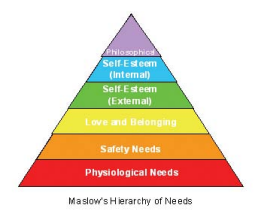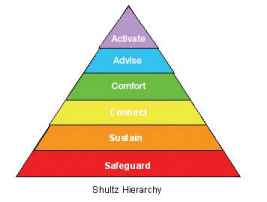High Alert Institute
You Built It and They Didn’t Come; Part 1 – Getting Voted Back onto the Island

You Built It, and They Didn’t Come
Part 1 – Getting Voted Back onto the Island
By: Dr. Maurice A. Ramirez
Updated: 04Oct2022
After years of education and budget planning, the company finally realized that instituting a business continuity plan, ensuring data redundancy, and even having an alternate operations site are prudent investments for the future. Through several evolutions of the continuity of operations plan, true “one button” business continuity is finally achieved. ,The company placed fuel, food, and water at the alternate operations site to anticipate employee needs.
Despite the costs, leadership heeds wise counsel and performs semi-annual full-scale disaster drills, testing every aspect of the plan and practicing to the point of mastery. As predicted, the process enhancements inherent to business continuity planning manifest themselves in greater customer satisfaction, improved employee morale, and bottom-line profit.
No sooner does the company announce that they are “disaster ready” than a natural disaster strikes. In a matter of hours, the company’s community suffers devastating losses as homes are destroyed, power and water services are cut off, and commercial buildings are rendered uninhabitable.
But the company is prepared.
The , the “button” is pushed, no data is lost, and the alternate operations site roars to life, but only 2 out of 3 employees come to work. You had planned on playing ball in the Field of Dreams only to discover the staff is playing Survivor.
So why did they vote you off the island?
Why did responsible and loyal employees deviate from expected behavior?
The question is not one of responsibility but one of human behavior.
Where Are You on Their Pyramid of Needs?
In the 1950s Maslow described a hierarchy of needs based on the physiological and psychological progression of development in the human animal. Maslow’s principles state that people, like most animals, must satisfy basic foundational needs before acting to meet higher order needs. A review of “Maslow’s Hierarchy” demonstrates that one must secure the immediate environment before one can eat or sleep (physiological need fulfillment). Similarly, one must obtain shelter and “safety items” such as fire (light, heat, and cooking) before one can look after the same needs for family (Love & Belonging Needs). Maslow defined physiological, and safety needs as foundational needs for his pyramid of needs.

Maslow continued to describe the “higher order needs,” including external validation and reward (External Self Esteem Needs); internal validation and self-actuation (Internal Self Esteem Needs); exploration, discovery, and creativity (Philosophical Needs). As with the foundational needs, fulfillment at each “higher order needs” level is required before one will act based on a need at the next level. Maslow’s Hierarchy explains why responsible and loyal employees do not come to work after a disaster, and they are driven to fulfill more basic needs first. The priority of these most basic needs explain the absenteeism often associated with the post-disaster period, simply put, they are incapable of leaving themselves and their “tribe” at risk to go to work.
How can an employer become a higher priority for the employee post-disaster?
Create direct connections between the employee’s most basic needs and your need for them to come to work.
Why You Are Off the Island
In 2003, Shultz related Maslow’s Hierarchy to disaster survivors’ psychological needs, finding that physical safety and security (shelter & clothing) are the most essential of these foundational Maslow needs, followed by sustenance (food, water, medications). Shultz posited that these psychological needs were actions rather than objects, as described by Maslow. Shultz named the need to obtain physical safety and security, the need to “Safeguard,” and the need to obtain sustenance, the need to “Sustain.” Shultz groups “Safeguard” and “Sustain” together in the “Safety” level of his Hierarchy.

Shultz next described the need to “Comfort” and “Connect” with family, close friends, or others of significance in one’s life (the “tribe”). While “Safeguard” and “Sustain” are purely physical activities that lend to an overall sense of psychological well-being, “Comfort” is a combination of physical needs (climate-controlled environment, a place to sleep, a blanket) as well as psychological needs (empathy, understanding, camaraderie). This combination of the physical and the psychological represent a transition in the type of needs that the disaster survivor seeks. “Connect” is even less a physical need (telephone, email / text messages, instant messages / social media posts, radio / television) as opposed to a psychological need (a sense of closeness).
It is the combination of “Comfort” and “Connect” that spurs disaster survivors to remain close to their “tribe.” The combined needs, if not met, causes these “tribes” to stay together as an imperative, even to the point of refusing evacuation if their “tribe” cannot travel as a unit. Shultz refers to this set of combined needs as the “Function” level in his Hierarchy, stating that without the satisfaction of both “Comfort” and “Connect” needs, the disaster survivor is incapable of normal “Function.”
Finally, Shultz concluded that with the first four actions completed, one was ready to “Advise” (gather information and make decisions on how to obtain higher order needs) and “Activate” (act on those decisions). Shultz states “Advise” and “Activate” are the needs that must be satisfied for a disaster survivor to resume taking independent, autonomous “Action” and thus assume their role as an employee; thus Shultz named this highest level of his hierarchy “Action.”
Shultz found that performing work tasks after a disaster was in the highest strata (Activate), while Maslow assigned work to the category of External and Internal Self Esteem Needs, thus for employees to report to work after a disaster, they must ascend to the highest levels of both Shultz’s and Maslow’s Hierarchies.
Recent disaster response and recovery experience in disaster behavioral health has found that a disaster survivor must perform Shultz’s six actions within each of Maslow’s seven orders of needs. Field observations show that disaster survivors must Safeguard, Sustain, Comfort, Connect, Advise and Activate at Maslow’s Physiological level before they can begin taking the same actions at Maslow’s Safety level. Similarly, the disaster survivor must Safeguard, Sustain, Comfort, Connect, Advise and Activate at Maslow’s Love & Belonging level before they can begin to act at Maslow’s External Self Esteem level. Ultimately, as both Maslow and Shultz predicted, the disaster survivor must Safeguard, Sustain, Comfort, Connect, Advise and Activate at Maslow’s External Self Esteem level before they report to work.
The Roof was Their Foundation
Following hurricanes Charlie in 2004, a prominent Florida coastal hospital suffered roof damage. Besides a few wet walls and a leak in the stairwell, the hospital was dry and secure. Despite this and a contractual requirement to report to work, a disturbing percentage of employees did not come to work for several days. The employees were busy safeguarding themselves and their families. The lack of physical security intensified the need to stay connected. Family tribes stayed together, repairing homes, buying generators, and even buying food as a group.
Investigating the causes for the high absenteeism rather than just firing critical people summarily, the hospital learned that 94% of their employees lived within one mile of the coast, and 99% of all employees had roof damage. In response, the hospital convinced their roofing contractor to give first priority (after the hospital) to hospital employees beginning with those who work during the disaster or the disaster response. This roofing deal cost the hospital nothing and guaranteed the roofing contractor paying business while ensuring employees would have home repairs completed quickly. A true win-win-win situation.
The Next hurricane of the 2004 season, Francis, caused more roof damage than Charlie, but there was virtually no absenteeism following the storm. By providing for the employee’s safety and the safety of the employee’s family tribe, the hospital’s needs became essential to meeting the employee’s needs.
Serve Their Needs and They Will Serve Yours
Most employers count on four factors to “ensure” employees report to work.
- Pay
- Appreciation
- Loyalty
- Fear
History has shown that even in light of above industry standard pay, employees and management will secure their home and family before reporting to work. When asked, these individuals cite personal values, family priorities, and “seeing what I important” as the reasons for their behavior change, yet once the disaster is past, most of these individuals return to their pre-disaster work ethics and schedules.
Although employer appreciation of the employee is a greater motivator than pay, the employer is placed on a different relationship priority level than the “tribe.” Thus, when the tribe is threatened, the employer is again off the island until the disaster is past and the threat removed. Yet again, these employees resume prior work ethics and schedules despite promises to spend more time with family and “those who matter most.”
Like appreciation, employee loyalty is a superb motivator pre-disaster but fails to change behavior significantly during a disaster or in the immediate disaster response phase. Intuitively, one would expect that employees with a high sense of employer loyalty would be apt to return to work sooner, but Maslow and Shultz have shown that basic needs must be met before these employees are effective, even if they do show up.
Fear of job loss is seldom an effective tool to induce employees to return to work after a disaster. Quite the opposite, it appears that employers who resort to threats to ” ensure” workplace attendance are the most likely to have high disaster-related absenteeism. Without a positive employer / employee relationship, the employer is voted off the employee’s psychological island.
Many corporations are looking at employee needs and other barriers to attendance to decrease employee absenteeism in the event of disaster and boost the employer / employee relationship. Business continuity and disaster recovery plans that include “employee needs” provide a means to return to work (gasoline and food). The problem is that all of these are higher levels on Maslow’s Hierarchy. In short, before pay, appreciation, loyalty, gasoline, and even food become inducements to report to work, the employee must obtain physiological and safety needs for themselves and their “tribe.” Therefore, the key is to provide for the employee’s foundational needs at the most basic levels of Safeguard and Sustain before the disaster occurs. In short, it is not enough to ensure business continuity, you must ensure personnel continuity and resilience.
To Prepare is the Key
The employer who meets these more basic needs is the employer who, like the Florida hospital, will enjoy high employee attendance. How does an employee meet these more basic needs? Ask employees what they need to take care of themselves and their “tribe.” Once you know what your employees will need in their time of adversity, help them prepare the same way you prepared your company.
Safeguard: Hold a “Family Preparedness Fair” at work where employees and their families learn to create a family disaster plan and prepare themselves and their homes for disaster. Instead of the usual holiday gift, give 96-hour disaster “Go-Paks” to employees and their families as holiday gifts each year. Give each new hire a Go-Pak as their welcome gift too. Include valued clients, suppliers, and your own family among those to whom you give the Gift of Preparedness. Such kits can easily be made for very little money in-house or ordered from such vendors as 1-800-Prepare and Guardian Survival Gear. Be sure that the Go-Pak comes with a disaster preparedness guide such as The Complete Idiot’s Guide to Disaster Preparedness (Alpha Press, 2009).
Sustain: Rather than stockpiling food and water at the workplace, have each employee stockpile their share at home. During a disaster, their Go-Pak can be replenished each evening after work from that stockpile; if the family is in need, the stockpile can be shared without repercussions.
Comfort: Encourage employees to have personal photos and mementos in the workplace so that they feel a personal emotional connection to the workplace as a home away from home and their colleagues as their family away from home. Make arrangements for rest areas and cots for employees who may have to stay on site after a disaster. Consider installing a generator or other means of maintaining a comfortable work environment.
Connect: Ensure that your continuity of communications plan includes keeping employees in contact with family during business continuity operations. A “family phone” is a great morale booster, even if unused, because it says to everyone, “you are important, and so is your family.”
Advise: Educate your staff on their role in the continuity of operations plan and how they can participate if “tribal” demands prevent onsite attendance. Giving options enables employees to make informed decisions that often favor the employer in the short and long term.
Activate: Empower employees to help themselves by helping you. Make participation in the continuity of operations plan easy rather than mandatory. Make reporting to work on “disaster day” an achievement and provide copious praise for the effort.
By Safeguarding, Sustaining, Comforting, Connecting, Advising, and Activating your employees and their “tribe,” you become an essential part of their family’s survival and stay on the island.
The next segment of this series will examine,
Part 2 – Surviving: The Physical Needs.
+++++++++++++++++++++++++++++++++++++++++++++++++++++++++++++
High Alert Institute
4800 Ben Hill Trail
Lake Wales, FL 33898
Office: 863.696.8090
FAX: 407.434.0804
EIN: 27-5078437
Info@HighAlertInstitute.org
Privacy Policy
Cookie Policy
Terms of Use
Disclaimers
Get Your Data
Shipping Policy
Message Us
Transparency
Registrations
Do Not Sell Info
Return Policy
A COPY OF THE OFFICIAL REGISTRATION AND FINANCIAL INFORMATION MAY BE OBTAINED FROM THE DIVISION OF CONSUMER SERVICES BY CALLING TOLL-FREE, WITHIN THE STATE, 1-800-435-7352 (800-HELP-FLA), OR VISITING www.FloridaConsumerHelp.com. REGISTRATION DOES NOT IMPLY ENDORSEMENT, APPROVAL, OR RECOMMENDATION BY THE STATE. Florida Registration #CH68959
REGISTRATION WITH A STATE AGENCY DOES NOT CONSTITUTE OR IMPLY ENDORSEMENT, APPROVAL OR RECOMMENDATION BY THAT STATE.










